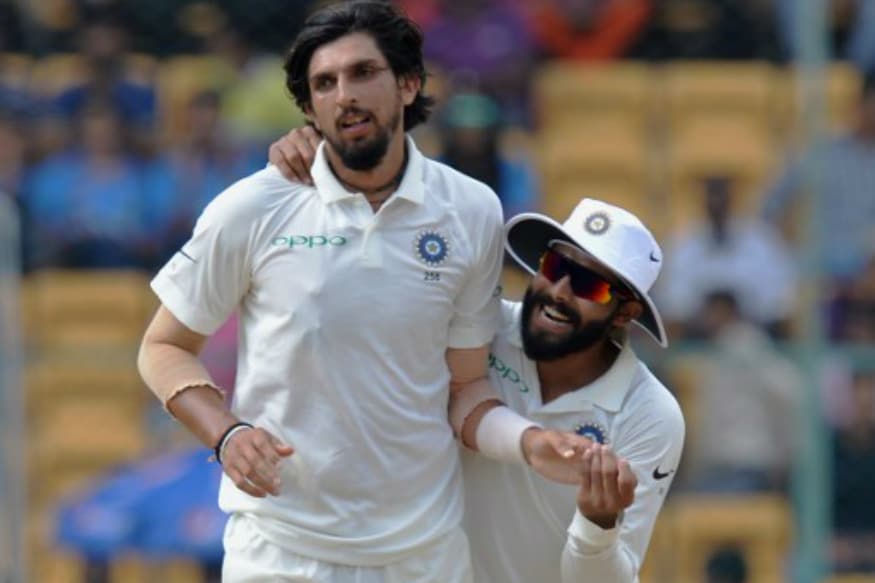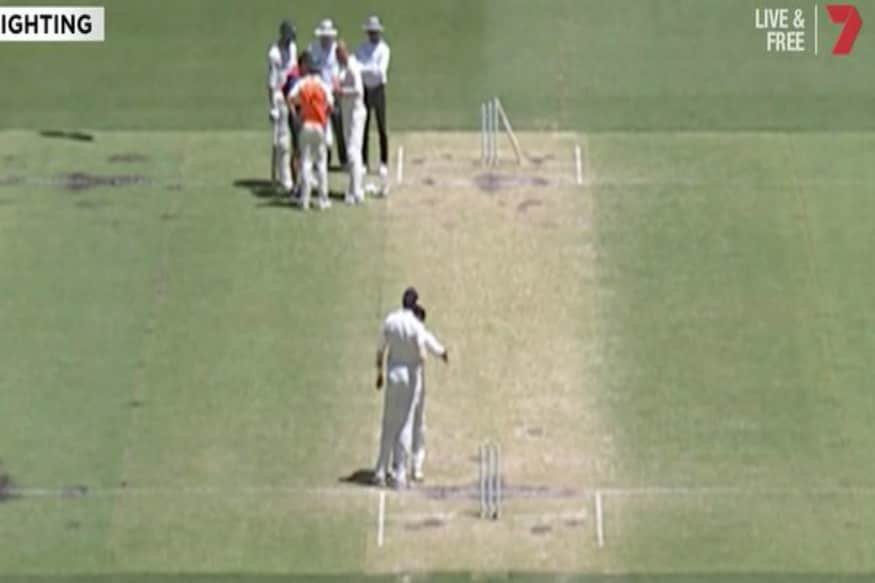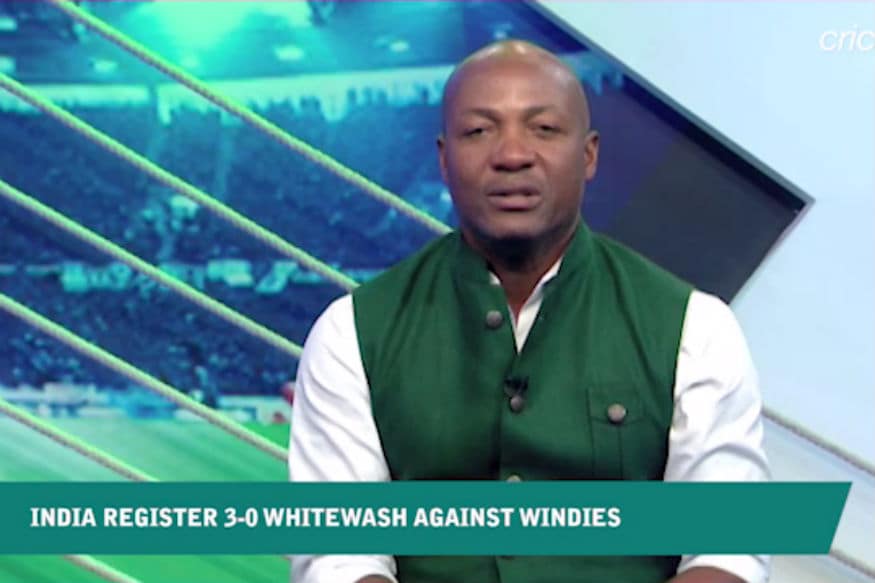
(Image Credits: AFP)
Loading...
The relationship between the team and Channel 7 and Fox threatened to deteriorate rather dramatically after sections of the Australian media published a story around an animated conversation, labelled a fight, between Ishant Sharma and Ravindra Jadeja, the 12th man, that took place on the fourth day of the Test, a few hours after the Test had ended.
The incident occurred on the fourth day, when Nathan Lyon was struck on the head by Mohammad Shami. While the umpires and medical staff made sure that Lyon was okay, near the stumps at the Justin Langer Stand End, Ishant and Jadeja, standing just about within earshot at the Members’ End, got into an argument of sorts.
The video of the incident was broadcast and then put out all over the internet and social media, but that version did not include audio of the conversation. While the body language in the video made it clear that Ishant was letting off steam, and was quite clearly television gold, but it was when the contents of the conversation became public that the team saw red. They are of the belief that the video was leaked by the host broadcasters, although there is no indication that this was the case.
The conversation, which took place entirely in Hindi, and has been translated, begins with Ishant telling Jadeja not to wave at him or gesture with his hand, but if he needed something to come over. Jadeja mumbles something in reply, gesticulating towards the far end of the field, towards the boundary rope or possibly the dressing-room and says: “I had come till there when they/he suddenly told me.”
Jadeja then asks Ishant something to the effect of why are you saying so much or why are you so bothered. Ishant then gets genuinely angry at something and says to Jadeja. “Don’t take out your anger on me,” with the warning that he would take that anger and shove it where the sun doesn’t shine. Ishant then begins to walk away and then comes back, repeating his warning. The conversation ends with Ishant saying, “Don’t tell me also. Don’t talk rubbish.”

The body language of both players is visibly aggressive and they are asked to go their separate ways on the field with the intervention of other team members, including Ishant’s fast bowling colleague Mohammed Shami.
Now, this sort of exchange isn’t entirely unusual in the middle of a high-intensity contest and certainly isn’t evidence of a rift in the Indian team. However, that is inevitably how such things are portrayed. When taken out of context, these statements, the animation, the anger can appear explosive. It needs to be understood that when someone is putting in physical effort of serious proportions on a sweltering day where the opposition is doing well, it is always on the cards that sharp words are exchanged. This is more likely from frustration or desperation, but it can, and in these days of wall-to-wall social media coverage, will be used to stir the pot.
In cricket, there was an unwritten rule that what happened on the field stayed on the field. By picking up on every movement on the field, listening to every conversation and broadcasting every gesture, this convention is being blown out of the water by the new broadcasters, who have replaced Channel 9.
When asked about the scrutiny at the end of the match — and before contents of the Ishant-Jadeja exchange became public captain Virat Kohli didn’t let on if the Indian team was indeed upset about the broadcast of these images and audio.
“With the stump mics and cameras and all these things, honestly when the bowler is bowling you aren’t thinking whether the stump mic is on or the camera is on you or not,” Kohli said. “And when you are facing that ball, literally there is no one in the stadium apart from you and that ball. So, these things are totally irrelevant, and you are actually not aware of them when you are on the field. It’s never bothered me, it’s never been something that’s of importance to me to be honest. For me it’s irrelevant.”
With relation to vision aired on our coverage today Indian team management have tonight told 7Cricket that the incident between Ishant Sharma and Ravindra Jadeja happened at the spur of the moment and management confirms that all is well between the two.
— 7 Cricket (@7Cricket) December 18, 2018
However, the incident is part of a larger narrative that appears to be unfolding. During the second Test, there was plenty of chirp, but whatever was audible via the stump microphone on the broadcast was in the nature of friendly banter or sledging.
There was no abuse and whatever imaginary line has been drawn in the cricketing sand was not crossed. Tim Paine and Kohli got into several exchanges, once coming so close to each other that they almost touched.
Paine was clearly heard rhetorically asking M Vijay: “I know he's your captain, but you can't seriously like him as a bloke?” When the host broadcaster clipped this and replayed it, Kohli was back in the dressing room and broke into a wry smile. This too was captured by the telecast.
There was another exchange in the Australian second innings when Paine was batting and a loud appeal for a caught behind was turned down. “If he messes it up it’s 2-0, and who’s going to talk then?” Kohli said to M Vijay as he walked past Paine.
The Australian captain was quick to retort: “You’ve got to bat first, big head.”
A third instance came from Marcus Harris, playing in only his second Test match when Rishabh Pant was at the crease towards the end of the fourth day’s play. “If you get out you can go out and disco tonight,” Harris told Pant. “Good circuit on a Monday night in Perth.”
While these comments are mild compared to some of the things said in heated moments on a cricket ground and are excellent fodder for television, radio and the Internet, for they go viral on social media almost instantly, there is growing concern that the levels of intrusion into the playing field by the broadcasters is reaching a tipping point.
Aside from the countless high-definition television cameras in place, there is also the spydercam hovering about and during this series a camera mounted on a remote-controlled platform that scuttles around the outfield and elsewhere capturing images from angles rarely seen before. Then there is the audio from the stump microphones, which is turned up quite high on the Fox broadcast, allowing snippets of conversation to be heard quite clearly in fans’ homes.
But, it’s one thing when the tension is between the two teams doing battle out in the middle and another entirely when it is between a visiting team and the host broadcaster. For long Indian teams playing in Australia have believed that the host broadcasters, and by extension the local media, have acted as a 12th man of sorts to the Australian team.
The fact that on-field conversations to which only the umpires, match officials and broadcasters were privy, were finding their way to public platforms has left the team so angered that they did not do put up players for interviews with the host broadcasters on the final two days of the Test. They did however, put up a single player before and after play.
For long, India’s players, who are followed wherever they go, mobbed in all public places and generally considered public property as celebrities, treated the playing field as a sanctuary of sorts. It appears they are no longer safe even there.
Indian team rubbishes 'rift' reports
The Indian team management clarified that the incident between Ishant Sharma and Ravindra Jadeja was in no way a "fight" and happened at the spur of the moment on the field. The management confirmed that all is well between them.
Australia vs Indiaaustralia vs india 2014 15Channel 7Fox CricketIndia vs Australia 1994India vs Australia 2018ishant sharmaM Vijaymohammed shamiRavindra JadejaTim Painevirat kohli
First Published: December 18, 2018, 4:37 PM IST


 GET APP
GET APP
 BCCI Rubbishes Kohli-Paine Banter Reports
BCCI Rubbishes Kohli-Paine Banter Reports Kohli-Paine War of Words Offers Delicious Sub-Plot
Kohli-Paine War of Words Offers Delicious Sub-Plot Verbal Duel Between Kohli & Paine in Good Spirits: Hazlewood
Verbal Duel Between Kohli & Paine in Good Spirits: Hazlewood




